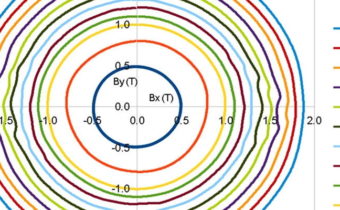
New method for 2-furfuraldehyde analysis
Abstract Apart from abnormal faults detected by DGA, one of the most important factors in shortening the lifetime of a power transformer is ageing of...
by Javier Jiménez Cervera and Begoña Remartínez Zato

Abstract
Apart from abnormal faults detected by DGA, one of the most important factors in shortening the lifetime of a power transformer is ageing of paper insulation used in transformer construction. The analysis of furans in transformer oil is one of the best techniques to be used in the assessment of the remaining lifespan of a used transformer. This technical article aims to describe the development and validation of an analytical method based on ultraviolet-visible (UV-VIS) absorption spectrophotometry, designed to evaluate the content of 2-furfuraldehyde (2-FAL) dissolved in dielectric oil. This is a technique which, despite not reaching the levels of resolution of the more commonly used high-resolution liquid chromatography (HPLC), provides greater efficiency in terms of utilisation of resources, both financial and manpower.
Keywords: insulation ageing, dielectric oil test, life extension, asset management, 2-furfuraldehyde, degree of polymerisation
1. Introduction
The transformer insulating system is a combination of mineral oil and cellulose paper – a combination which achieves an excellent dielectric and cooling capacity, at a low cost. To perform predictive maintenance of these transformers, it is necessary to periodically assess the occurrence of abnormal faults and degradation of their insulation systems.
The most commonly used solid insulation (Kraft paper) is composed of 90 % cellulose. This natural polymer degrades throughout the lifecycle of a transformer, resulting in oil soluble subproducts. The degree of polymerisation (DP) is a parameter that evaluates a condition of the paper which deteriorates with ageing of the insulation. New insulation with a high degree of mechanical strength will typically have a degree of polymerisation (DP) from 1000 to 1300. “Middle-aged” paper will approximately be at 500, while paper with a DP of less than 250 is considered “old-aged”. These estimations are based on a study on GSU mineral oil filled transformers, conducted by Chendong. Severely degraded insulation with a DP of 150 or less will have very little mechanical strength and may result in transformer failure. This is critical, because paper cannot be altered or subjected to regeneration processes, and therefore degradation of solid insulation can lead to the end of transformer’s life. The purpose of this article is to describe the development and validation of an analytical model based on ultraviolet-visible (UV-VIS) absorption spectrophotometry to be used in evaluating the content of 2-furfuraldehyde (2-FAL) dissolved in dielectric oil. In comparison to the more frequently used high-resolution liquid chromatography (HPLC), this method does not reach the same resolution levels, but it provides greater efficiency with regard to utilisation of financial and manpower resources.
The methodology used during the process was based on several thermal degradations of the oil with the aim of achieving the widest possible range of visual aspects, and the synthesis of a colourimetric reagent so that it reacts with the sought compound. Calibration curves were made with standard solutions, in order for each visual aspect to permit real sample analysis. Finally, UV-VIS method data for real samples was compared with HPLC method data, with good results. The main result of this study was to validate the method for quantification of 2-furfuraldehyde concentrations not exceeding 5 parts per million, dissolved in the oil of transformers used in power generation. In conclusion, the aim was to develop a new methodology for determination of 2-furfuraldehyde, thus leading to significant cost savings, both economic and material. This will enable indirect determination of the status of the solid insulation of transformers for power generation, through a more accessible technique than those currently used.







